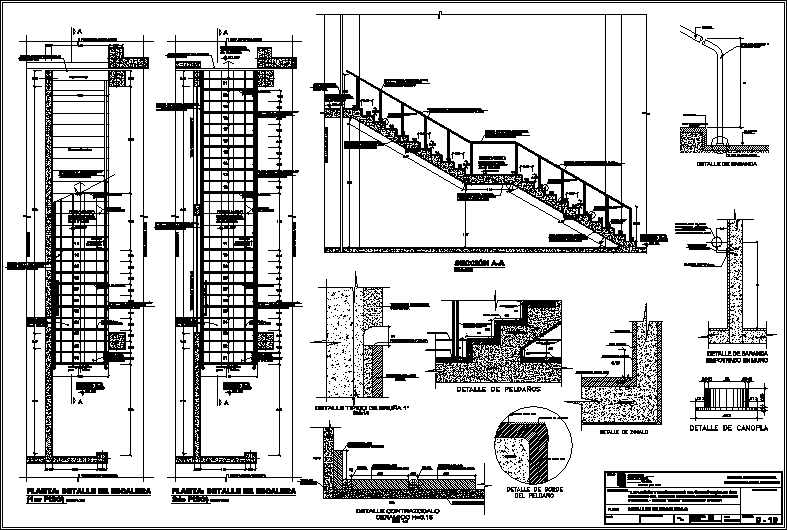Stairs are an essential element of any building, providing safe and convenient access between different levels. Whether you’re constructing a new staircase or renovating an existing one, understanding the key construction details is crucial for ensuring structural integrity, safety, and aesthetic appeal. This comprehensive guide will take you through the important aspects of stair construction, including dimensions, materials, design considerations, and building codes. By following these guidelines and consulting with professionals when needed, you can create a well-designed and functional staircase that meets both practical and aesthetic requirements.
Step 1: Determine the Stair Type and Configuration
Consider the purpose and space available to determine the type and configuration of your staircase. Common types include straight stairs, L-shaped stairs, U-shaped stairs, and spiral stairs. Assess the available space, taking into account the height, width, and depth available for the stairs. Ensure that the stair configuration allows for comfortable and safe movement between levels.
Step 2: Calculate Stair Dimensions
Calculate the dimensions of the stairs, including the total run and rise. The run is the horizontal distance covered by the stairs, while the rise is the vertical distance between each step. Follow building codes and regulations to determine the maximum and minimum dimensions allowed. Consider factors such as comfort, ease of use, and the specific needs of individuals using the stairs.
Step 3: Choose Suitable Materials
Select suitable materials for your staircase, considering both structural and aesthetic factors. Common materials include wood, metal, concrete, or a combination of these. Ensure that the chosen materials provide the necessary strength and durability to support the anticipated traffic load. Consider the aesthetics of the materials and how they will complement the overall design of your space.
Step 4: Design Balustrades and Handrails
Pay attention to the design and construction details of balustrades and handrails. These components are essential for safety and aesthetics. Determine the appropriate height for the handrail, ensuring it is comfortable and meets building codes. Choose materials and designs for balusters that provide proper spacing and stability. Consider incorporating decorative elements to enhance the visual appeal of the staircase.
Step 5: Consider Treads and Risers
Decide on the type of treads and risers for your staircase. Treads are the horizontal steps on which you walk, while risers are the vertical elements between the treads. Consider the materials, dimensions, and finishes for treads and risers that offer both safety and aesthetics. Ensure that treads have sufficient depth and a slip-resistant surface. Aim for consistent dimensions and spacing throughout the staircase for ease of use.
Step 6: Ensure Adequate Lighting and Visibility
Incorporate adequate lighting to enhance visibility on the stairs. Proper lighting helps prevent accidents and creates an inviting ambiance. Consider natural lighting sources, such as windows or skylights, as well as artificial lighting options. Install lighting fixtures in appropriate locations to ensure even illumination across the staircase, including the treads, risers, and handrails.
Step 7: Follow Building Codes and Regulations
Adhere to local building codes and regulations throughout the stair construction process. Building codes provide guidelines for dimensions, materials, safety features, and accessibility. Familiarize yourself with the specific requirements for your region to ensure compliance and create a safe and legally compliant staircase.
Conclusion
Constructing a staircase involves careful attention to detail, from choosing the right configuration and materials to incorporating safety features and adhering to building codes. By following this comprehensive guide and consulting with professionals, you can create a well-designed and functional staircase that adds value and enhances the overall aesthetics of your space.

